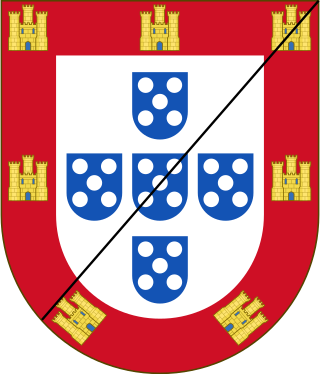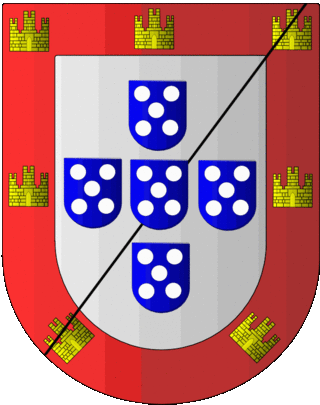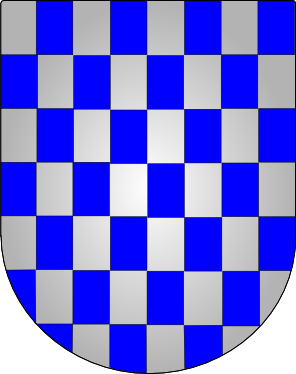Related Research Articles

Sebastian was King of Portugal from 11 June 1557 to 4 August 1578 and the penultimate Portuguese monarch of the House of Aviz.

The House of Aviz, also known as the Joanine Dynasty, was a dynasty of Portuguese origin which flourished during the Renaissance and the period of the Portuguese discoveries, when Portugal expanded its power globally.

Duke of Aveiro was a Portuguese title of nobility, granted in 1535 by King John III of Portugal to his 4th cousin, John of Lencastre, son of Infante George of Lencastre, a natural son of King John II of Portugal.
The highest hereditary title in the Portuguese nobility. By tradition, there are a total of five royal and seven non-royal dukes in Portugal, out of 28 dukedoms that have ever been created. In the majority of cases, the title of duke was attributed to members of the high nobility, usually relatives of the Portuguese royal family, such as the second son of a monarch.
Jorge Maria O'Neill was the head of a branch of the Clanaboy O'Neill dynasty, which has resided in Portugal since the 18th century.

Raul Soares is a Brazilian municipality located in the state of Minas Gerais. The city belongs to the mesoregion of Zona da Mata and extends to the microregion of Ponte Nova. As of 2020, the estimated population was 23,711.

Álvaro of Lencastre (1540–1626) was the son of Afonso of Lencastre, second son of infante George of Lencastre, 2nd Duke of Coimbra.

Baltazar Leite Rebelo de Sousa, GCIH was a Portuguese politician and a former minister and member of parliament and medicine professor.
António Jorge Martins da Mota Veiga was a Portuguese politician and former Minister and law professor.

Marquess of Abrantes was a Portuguese title of nobility, granted by a decree issued by King John V of Portugal on 24 June 1718, to Rodrigo Anes de Sá Almeida e Menezes, 3rd Marquess of Fontes and 7th Count of Penaguião.

Count of Penaguião is a Portuguese title of nobility, created by King Philip I of Portugal, on 10 February 1583, for Dom João Rodrigues de Sá.

The Brazilian nobility refers to the titled aristocrats and fidalgo people and families recognized by the Kingdom of Brazil and later, by the Empire of Brazil, dating back to the early 19th century, when Brazil ceased to be a colony of the Kingdom of Portugal. It held official status until 1889, when a military coup d'état overthrew the monarchy and established the First Brazilian Republic.

The House of Abrantes descends from the ancient and noble Almeida family.
António Osório Sarmento de Figueiredo Jr. was a Portuguese nobleman, jurist, politician and magistrate.
In the Medieval Kingdom of Portugal, the Cortes was an assembly of representatives of the estates of the realm – the nobility, clergy and bourgeoisie. It was called and dismissed by the King of Portugal at will, at a place of his choosing. Cortes which brought all three estates together are sometimes distinguished as Cortes-Gerais, in contrast to smaller assemblies which brought only one or two estates, to negotiate a specific point relevant only to them.

The Former Cathedral of Idanha-a-Velha is the decommissioned medieval Catholic cathedral of the former bishopric of Egitânia, in the Freguesia of Monsanto e Idanha-a-Velha, in the municipality of Idanha-a-Nova, in the central Portuguese district of Castelo Branco.

Ana Maria Pereira Abrunhosa Trigueiros de Aragão is a Portuguese economist and politician serving as Minister for Territorial Cohesion since October 2019.
References
- ↑ Braamcamp Freire, Anselmo (1921). Brasões da Sala de Sintra - Livro Primeiro. Robarts - University of Toronto. Coimbra: Coimbra : Imprensa da Universidade. pp. 183–184.
- ↑ "Condes de Idanha-a-Nova (2.ª criação)". Geneall. Archived from the original on 2017-09-16.